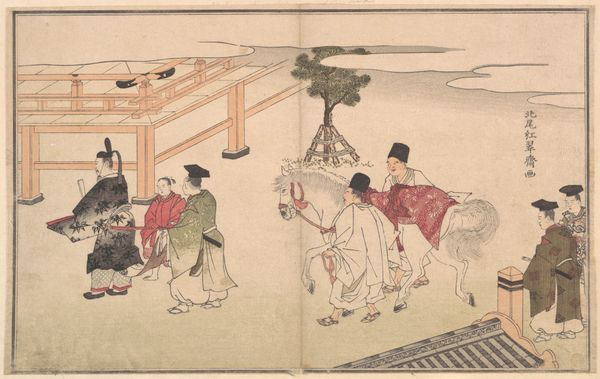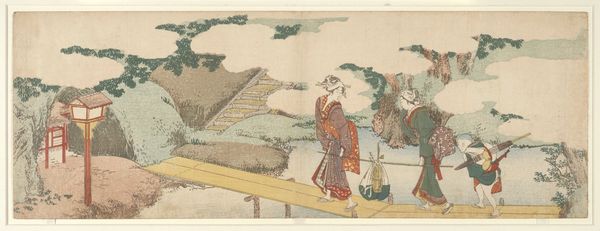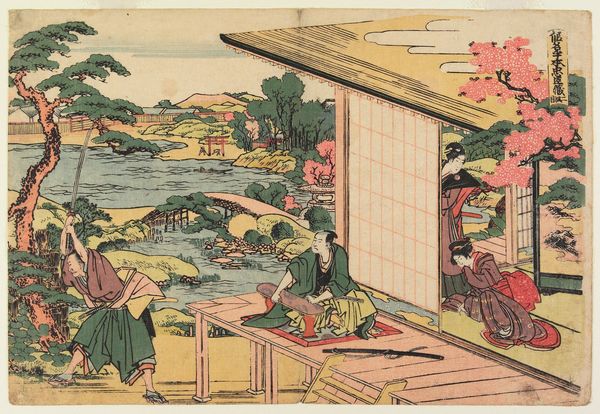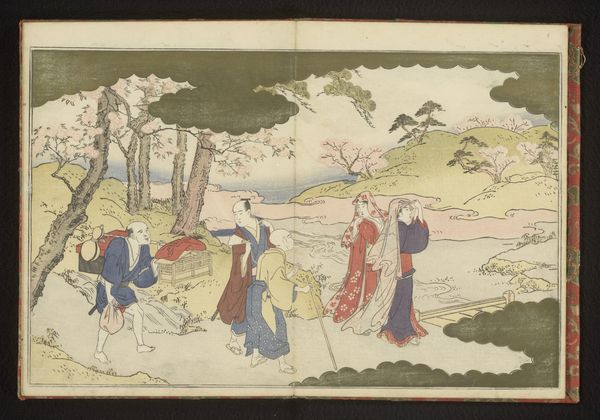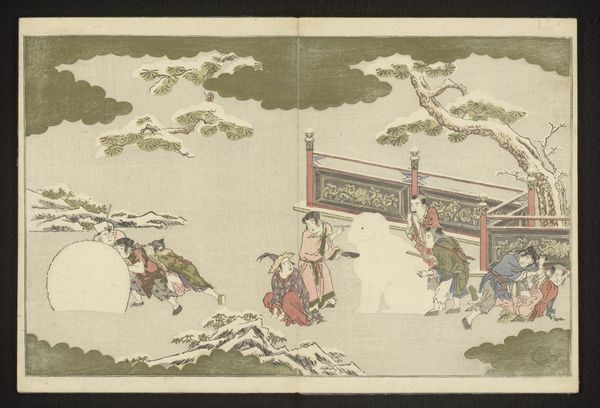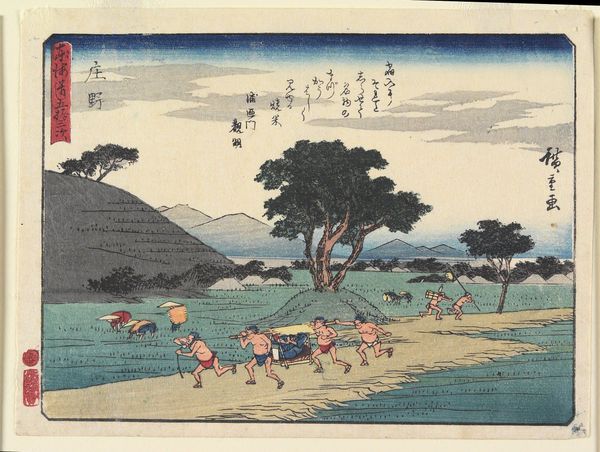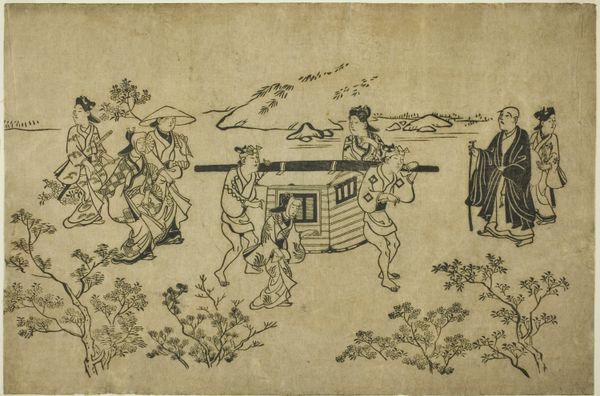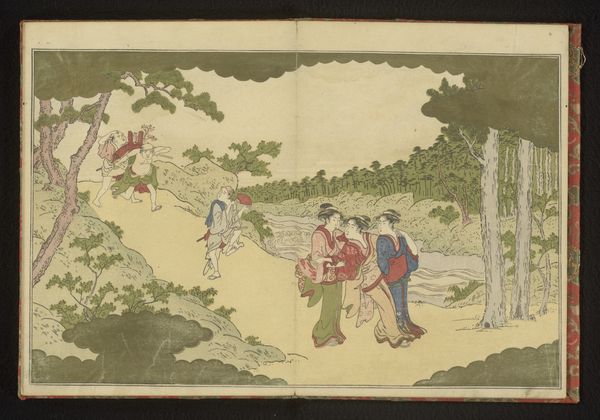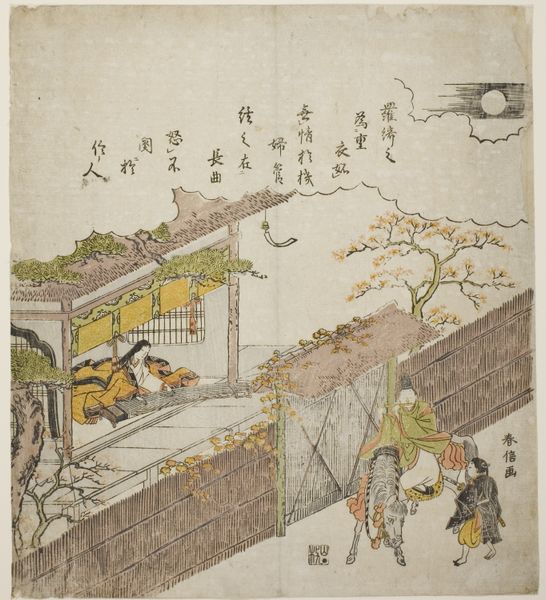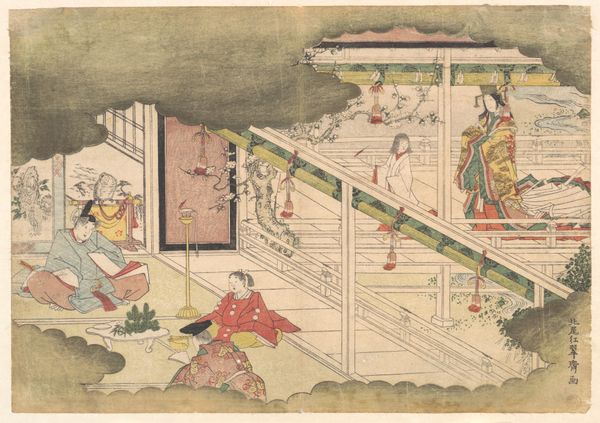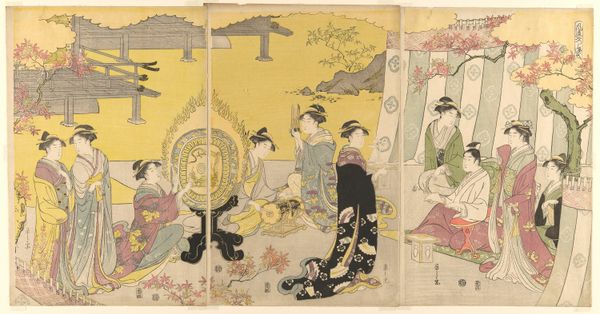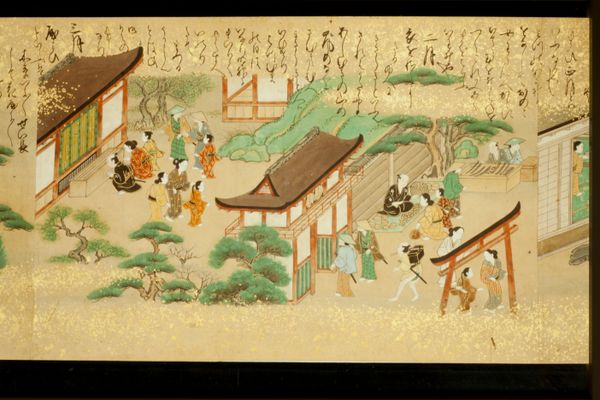
Brocade Prints of the Thirty-six Immortal Women Poets (Nishiki-zuri onna sanjūrokkasen) 1801
0:00
0:00
print, woodblock-print
# print
#
book
#
asian-art
#
landscape
#
ukiyo-e
#
japan
#
figuration
#
woodblock-print
#
men
Dimensions: 9 7/8 × 7 3/8 × 3/4 in. (25.1 × 18.7 × 1.9 cm)
Copyright: Public Domain
Chōbunsai Eishi produced this woodblock print of the Thirty-six Immortal Women Poets in Japan, sometime in the late 18th or early 19th century. It depicts a group of courtiers who are moving through a built landscape in the background. As you can see, Eishi presents a conservative vision of women’s roles in Japanese society, which was strongly defined by class status. The term “immortal” here connects to the Shinto religion and suggests a veneration of women who have excelled in the arts, specifically poetry. The visual codes of dress and setting indicate the privileged status of these women. It’s worth noting that the genre of Ukiyo-e prints developed and flourished in the Edo period as a form of art that was accessible to a wider public, including the merchant class, and prints often depicted scenes from everyday life, landscapes, and popular entertainment. By understanding the institutions and social structures that shaped artistic production, we can more fully appreciate the complex meanings embedded in this kind of art. Research into the history of Japanese poetry, Shinto beliefs, and the social hierarchy of the Edo period helps us to interpret it.
Comments
No comments
Be the first to comment and join the conversation on the ultimate creative platform.
